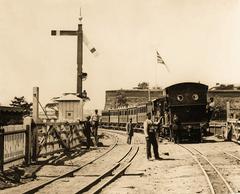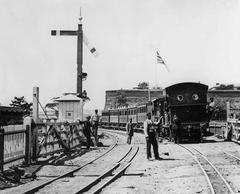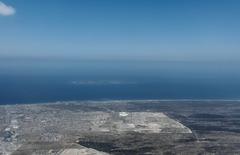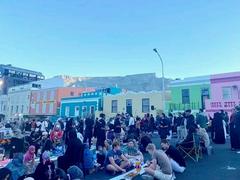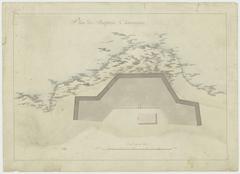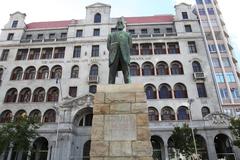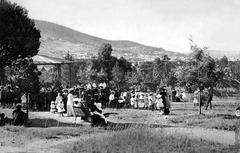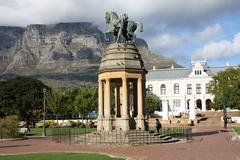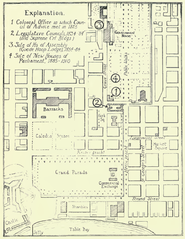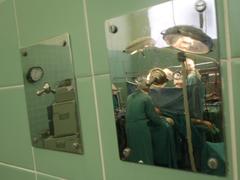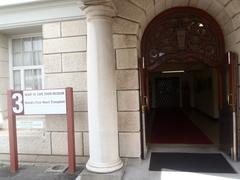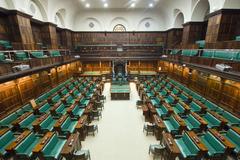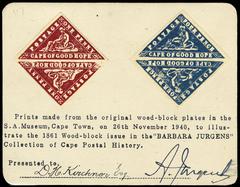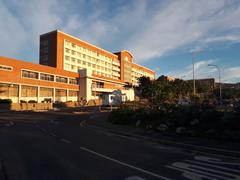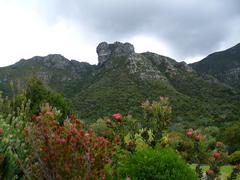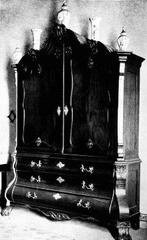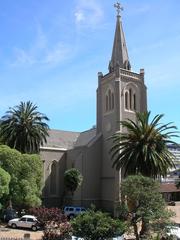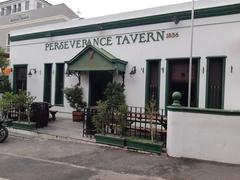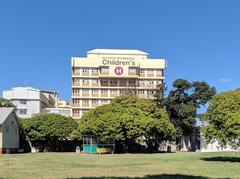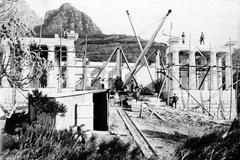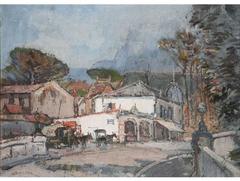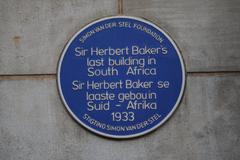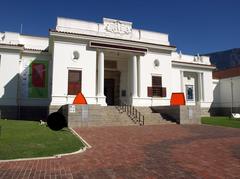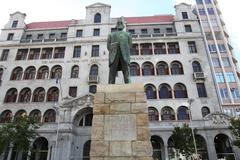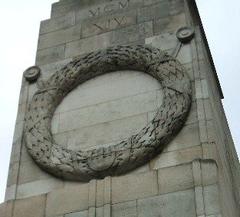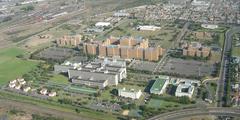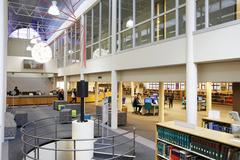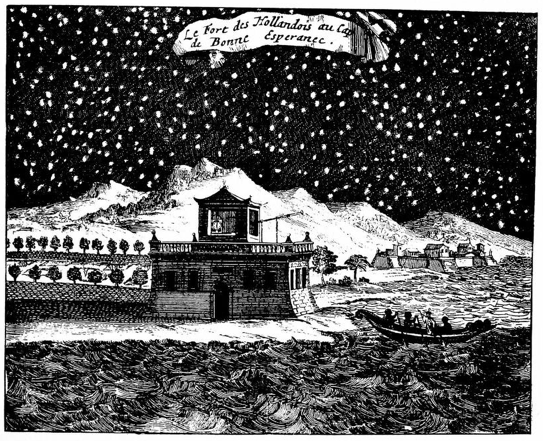
Visiting Hours, Tickets, and Historical Insights of the Castle of Good Hope, Cape Town
Date: 17/07/2024
Introduction
The Castle of Good Hope, located in the heart of Cape Town, South Africa, stands as a testament to the country’s rich and complex history. As the oldest surviving colonial building in South Africa, the Castle offers a unique glimpse into the past, illustrating the evolution of the region from its early days as a Dutch fort to its role in British colonial administration. Constructed between 1666 and 1679 by the Dutch East India Company (VOC), the Castle served as a replenishment station for ships traveling between Europe and the East Indies (South African History Online). This iconic pentagonal fortress not only provided defense against potential invaders but also symbolized the VOC’s dominance in the region (Castle of Good Hope Official Site).
Today, the Castle of Good Hope serves as a vibrant cultural and historical site, housing several museums, including the Military Museum and the William Fehr Collection, which features a vast array of artworks and artifacts from the colonial period (Iziko Museums of South Africa). The Castle also hosts various cultural events, educational programs, and guided tours, making it a dynamic part of Cape Town’s cultural landscape. Visitors from around the world are drawn to the Castle not only for its historical significance but also for its architectural beauty and the rich stories it holds within its walls.
Table of Contents
- Introduction
- History of the Castle of Good Hope
- Modern-Day Significance
- Visitor Information
- Architectural Features
- Historical Events
- Cultural Impact
- FAQ Section
- Conclusion
History of the Castle of Good Hope
Early Conception and Construction
The Castle of Good Hope, located in Cape Town, South Africa, is the oldest surviving colonial building in the country. Its construction began in 1666 by the Dutch East India Company (VOC) under the command of Governor Zacharias Wagenaer. The primary purpose of the castle was to serve as a replenishment station for ships traveling between Europe and the East Indies, providing fresh supplies and a place for rest (South African History Online).
The initial structure was a simple clay and timber fort, but due to the strategic importance of the Cape, it was soon replaced by a more robust pentagonal stone fortress. The construction was completed in 1679, making it one of the most significant architectural feats of the time in the region. The design of the castle was influenced by European star fortifications, which were prevalent in the 17th century (Castle of Good Hope Official Site).
Role in Colonial Administration
The Castle of Good Hope played a crucial role in the administration of the Cape Colony. It housed the Governor’s residence, administrative offices, and military barracks. The castle also served as a prison and a place of execution, reflecting its multifaceted role in the colonial governance system. The Governor’s residence, known as the Kat, was the administrative heart of the colony, where important decisions regarding the colony’s governance and trade were made (Heritage Western Cape).
Military Significance
Throughout its history, the Castle of Good Hope has been a military stronghold. During the 18th century, it was the center of military operations in the Cape Colony. The castle’s strategic location allowed it to control access to the harbor and protect the settlement from potential threats. The fortifications included bastions named after the main titles of William III of Orange - Leerdam, Buuren, Katzenellenbogen, Nassau, and Oranje (South African Military History Society).
British Occupation
The British occupation of the Cape Colony in 1795 marked a significant shift in the castle’s history. The British took control of the castle without much resistance and used it as their headquarters. The occupation was part of the larger geopolitical struggle between Britain and France during the Napoleonic Wars. The British returned the colony to the Dutch in 1803, only to reoccupy it in 1806, after which it remained under British control until the formation of the Union of South Africa in 1910 (National Archives of South Africa).
Restoration and Preservation
In the 20th century, the Castle of Good Hope underwent significant restoration efforts to preserve its historical and architectural integrity. The South African government declared it a national monument in 1936, recognizing its importance as a cultural and historical landmark. Extensive restoration work was carried out in the 1980s to restore the castle to its former glory, ensuring that future generations could appreciate its historical significance (Castle of Good Hope Official Site).
Modern-Day Significance
Museums and Cultural Events
Today, the Castle of Good Hope serves as a museum and a cultural site, offering visitors a glimpse into South Africa’s colonial past. It houses several museums, including the Military Museum and the William Fehr Collection, which features a vast array of artworks and artifacts from the colonial period. The castle also hosts various cultural events and exhibitions, making it a vibrant part of Cape Town’s cultural landscape (Iziko Museums of South Africa).
Educational Programs
The castle offers a range of educational programs aimed at promoting historical awareness and cultural understanding. These programs include guided tours, workshops, and interactive exhibits that provide visitors with an in-depth understanding of the castle’s history and its role in South African history. The educational initiatives are designed to engage visitors of all ages and backgrounds, making the castle a valuable educational resource (Castle of Good Hope Official Site).
Visitor Information
Visiting Hours
The Castle of Good Hope is open to visitors from 9:00 AM to 5:00 PM daily. Please note that visiting hours may be subject to change on public holidays.
Ticket Prices
Ticket prices vary based on age and group size. Adult tickets are priced at ZAR 50, while children under 16 can enjoy discounted rates of ZAR 25. Students and seniors with valid ID pay ZAR 30.
Guided Tours
Guided tours are available and highly recommended for a comprehensive understanding of the castle’s history and significance. Tours are conducted daily at 11:00 AM and 2:00 PM.
Special Events
The castle hosts a variety of special events throughout the year, including historical reenactments, cultural festivals, and art exhibitions. Check the official website for the latest schedule of events.
Nearby Attractions
Cape Town offers a wealth of attractions near the Castle of Good Hope. Visitors can explore the vibrant V&A Waterfront, the iconic Table Mountain, and the historic District Six Museum, all within a short distance from the castle.
Accessibility Information
The Castle of Good Hope is committed to ensuring accessibility for all visitors. The site includes ramps and accessible pathways for visitors with mobility challenges. Visitor information centers are available to provide assistance as needed.
Architectural Features
The Castle of Good Hope is renowned for its distinctive architectural features. The pentagonal design, with its five bastions, is a prime example of 17th-century military architecture. The walls are constructed from local stone, and the interior features a blend of Dutch and Cape Dutch architectural styles. Notable features include the Kat Balcony, the Dolphin Pool, and the ornate entrance gate, which bears the coat of arms of the Dutch East India Company (Heritage Western Cape).
Historical Events
The castle has been the site of numerous historical events, including the signing of treaties, military parades, and significant political decisions. One notable event was the signing of the peace treaty between the Dutch and the Khoikhoi in 1667, which marked the end of hostilities between the two groups. The castle also played a role in the Anglo-Boer War, serving as a military headquarters and a prison for Boer leaders (South African History Online).
Cultural Impact
The Castle of Good Hope has had a lasting impact on South African culture and heritage. It stands as a symbol of the country’s colonial past and its complex history of conflict and cooperation between different cultural groups. The castle’s preservation and continued use as a cultural site reflect South Africa’s commitment to acknowledging and preserving its diverse heritage (Iziko Museums of South Africa).
FAQ Section
What are the visiting hours of the Castle of Good Hope?
The Castle of Good Hope is open to visitors from 9:00 AM to 5:00 PM daily. Please note that visiting hours may be subject to change on public holidays.
How much are the tickets to visit the Castle of Good Hope?
Ticket prices vary based on age and group size. Adult tickets are priced at ZAR 50, while children under 16 can enjoy discounted rates of ZAR 25. Students and seniors with valid ID pay ZAR 30.
Are guided tours available at the Castle of Good Hope?
Yes, guided tours are available and highly recommended for a comprehensive understanding of the castle’s history and significance. Tours are conducted daily at 11:00 AM and 2:00 PM.
Conclusion
The Castle of Good Hope stands as a testament to South Africa’s rich and complex history. From its early days as a Dutch fort to its role in British colonial administration, the castle has been at the center of many significant historical events. Today, it continues to serve as a cultural and educational hub, offering visitors a unique insight into the country’s past. The ongoing preservation efforts ensure that this historical landmark will remain an important part of South Africa’s heritage for generations to come.
For more information and updates, visit the official website and follow the Castle of Good Hope on social media.
References
- South African History Online, n.d., SAHO https://www.sahistory.org.za/place/castle-good-hope
- Castle of Good Hope Official Site, n.d., COGH https://www.castleofgoodhope.co.za/
- Heritage Western Cape, n.d., HWC https://www.hwc.org.za/
- South African Military History Society, n.d., SAMHS http://samilitaryhistory.org/
- National Archives of South Africa, n.d., NASA http://www.national.archives.gov.za/
- Iziko Museums of South Africa, n.d., Iziko https://www.iziko.org.za/

